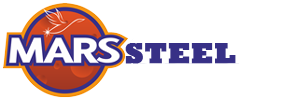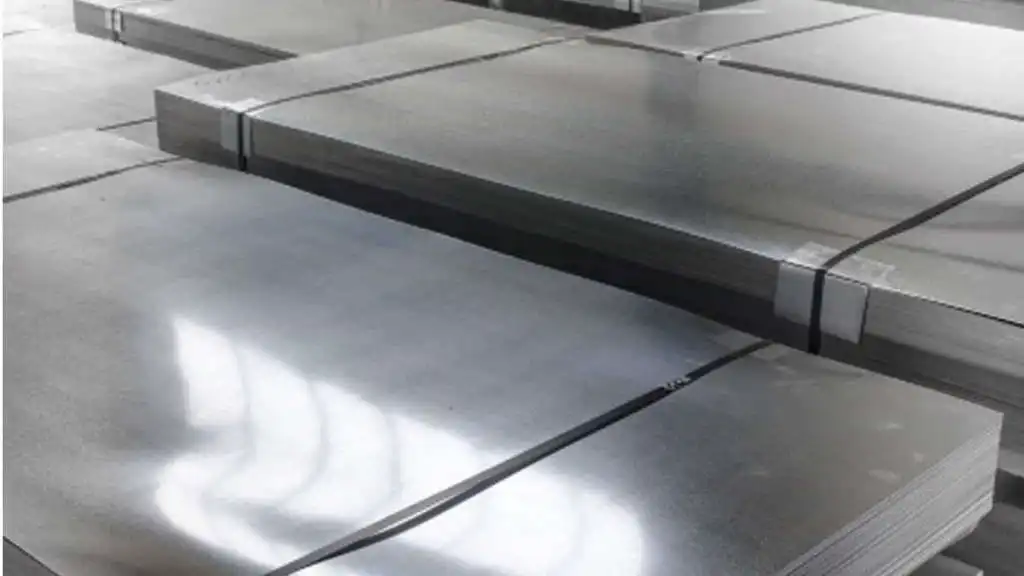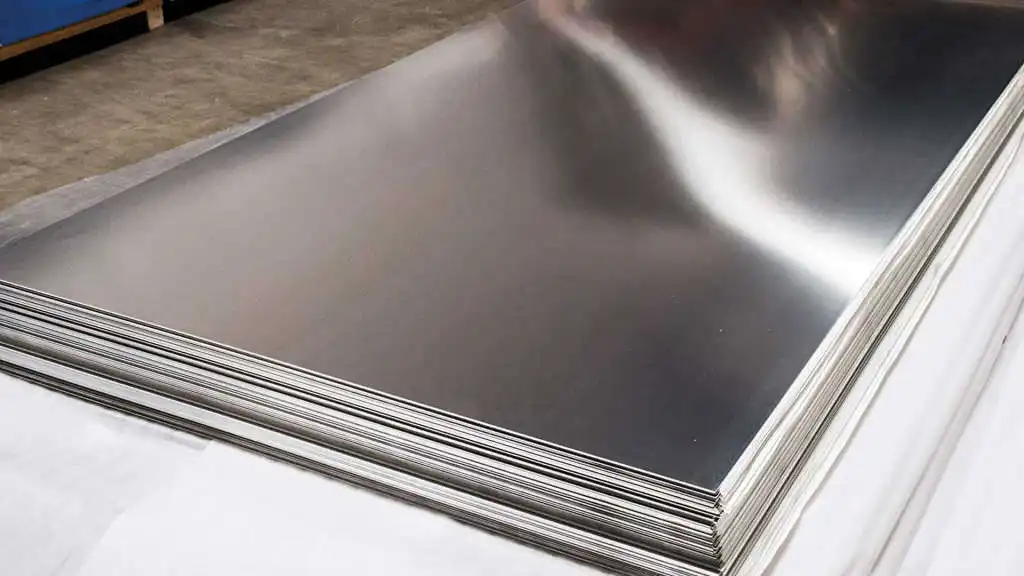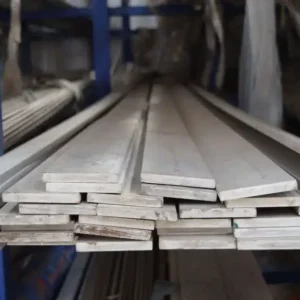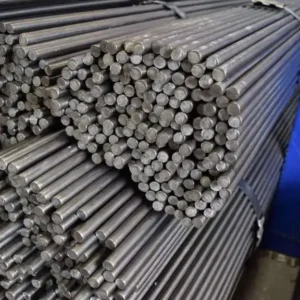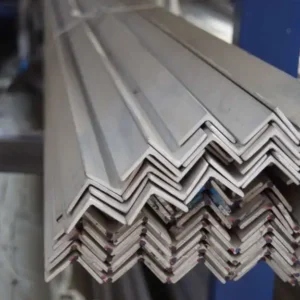Stainless Steel
With its bright appearance and long service life, it is preferred in the form of Stainless Steel, which is used extensively in many different sectors. Having a matte surface at the first production stage, Stainless steel sheets gain a shiny appearance with various interventions. After this stage, the areas of use are greatly expanded. The use of stainless steel sheets in architectural and kitchen areas has a shiny and stainless feature, It has the feature of self-repairing when it receives any impact or deformation. Being able to be repaired, it offers the possibility of use with minimum cost in terms of cost.
- Resistant to high temperature
- Self-healing and reducing costs
- Provides long-term use and saves money
- It is hygienic, therefore it is used in the food industry and medicine
- Resistant to high strength
- It is used in architectural structures with its bright appearance.
- Resistant to oxidation
At this point, the needs must be determined well and the ideal Stainless sheet alloy must be selected. Otherwise, the Stainless steel sheet model that does not match our intended use may be damaged over time or, to summarize, it may rust.
Known for facilitating daily life, Stainless steel sheets show corrosion resistance for an extremely long time. Known for its superior performance in terms of corrosion resistance, Stainless steel sheet therefore has a very high quality structure. Due to its high corrosion resistance, it may be possible to say that Stainless steel sheets are resistant to water contact. Sheets in contact with water can often show blackening or rust. Since it is a stainless steel sheet, there is no sign of blackening or rusting as a result of contact with water. The most important reason for this durability can be expressed as the preservation of corrosion resistance over the years. Stainless sheet options can also show resistance to high temperatures with the help of the carbon element it contains. At the same time, with the help of this element, it offers the ability to take shape. One of the most important advantages of stainless steel sheet is its high resistance performance against various corrosive environments. The most important element that succeeds in imparting corrosion resistance to the stainless steel sheet is expressed as chromium. Chromium, which succeeds in forming a self-healing layer around the metal surface, thus eliminates the possibility of stainless steel sheet being affected by external environments. Elements such as nickel, just like chrome, help the stainless steel sheet to have corrosion resistance.
Usage areas
As with stainless steels, these products can appeal to different areas. It is most suitable especially for places where contact with water is high, areas where corrosion is not desired but an aesthetic result is expected. Stainless steel sheet is used on the basis of our living spaces and most of the products that provide benefits. Your kitchen is known as the closest place to come across this type of product.
These products, which simplify our lives and provide clean and special results, appear as different steel alloys. Just like Stainless steel pipes , these products are also preferred in the structural and industrial sectors due to their unique results. One of the most frequently used fields is automotive. In addition, the chemistry and food sectors, which require hygiene, constantly demand equipment consisting of these products.
Because it is resistant to high temperature and strength; It is frequently used in kitchen, automotive, food, medical industry and sinks. The usage areas of Stainless steel, which has more than one type and feature, may change accordingly. Mainly used different areas;
- petrochemical
- storage tanks
- furnace construction
- photography industry
- exhaust pipes
- washing machines
It should not be forgotten that the type of steel used is different for each category we have counted. The biggest reasons for the use of stainless steel sheets in so many different areas are; robust, hygienic and long-lasting.
The surface of stainless sheets is smooth. In this way, it is preferred and used very comfortably in all areas of aesthetic concern. It is used directly as tools and equipment in elevators, building exteriors, kitchens, and against all areas of aesthetic concern. Since there are plates at the point of stainless sheet production, it also has a high use in terms of procedural, procedural.
Since the surface quality is of great importance, it is essentially ready for use without the need for paint or a special protection procedure. If requested, it can be produced only in matte form without glossy. It is preferred for the variety of uses for decoration purposes.
What are “L” and “H” Grades and Where Are They Used
“L” grades are used where there is a high temperature program, including the welding of medium and large materials. Low carbon is one of the ways to inhibit or retard intergranular carbide precipitation (often referred to as “sensitivity”) that can cause intergranular corrosion in corrosive environments. Precipitation of carbides has an incubation period in the temperature range of 450 – 850 ºC. Low carbon content increases strength in the face of this problem, since the time required for precipitation to occur is largely dependent on the carbon content. Due to their applications, “L” grades are available as plates, sheets, pipes and often round bars. In cases where there is no high temperature program or heavy welding requirement, “L” grades are generally identical to the others.
What are “H” Grades and Where Are They Used?
“H” Grades are high carbon versions of standard grades and have increased strength, especially at high temperatures (usually above 500 ºC). The “creep strength” values that occur with long-term applied loads are high. “H” grades are mainly produced as plates and pipes. In addition to the grades 304H and 316H to which it is generally applied, it is also available in high carbon versions of 309, 310, 321, 347 and 348 as defined in ASTM A240/A240M. These grades, if kept in the temperature range of 450 – 850 ºC, are greatly affected by carbide precipitation, which is called “sensitivity”. If the “sensitivity” problem occurs, their ductility and toughness at normal temperature are reduced and their corrosion resistance is significantly lost.
|
Carbon Content Specification Differences (ASTM A240/A240M)
|
|
Quality
|
UNS Its number
|
Defined Carbon Content (%)
|
|
304
|
S30400
|
Maksi. 0,080
|
|
304L
|
S30403
|
Maksi. 0,030
|
|
304H
|
S30409
|
0,040 – 0,100
|
|
316
|
S31600
|
Maksi. 0,080
|
|
316L
|
S31603
|
Maksi. 0,030
|
|
316H
|
S31609
|
0,040 – 0,100
|
|
Table – 2: Differences in Mechanical Properties Specification (ASTM A240/A240M)
|
|
Kalite
|
UNS No
|
Tensile Strength mini. (MPa)
|
Yield Strength mini. (MPa)
|
Elongation mini. (%)
|
Hardness Brinell max. (HRB)
|
Sertlik Rockwell (HB) maksi.
|
|
304
|
S30400
|
515
|
205
|
40
|
201
|
92
|
|
304L
|
S30403
|
485
|
170
|
40
|
201
|
92
|
|
304H
|
S30409
|
515
|
205
|
40
|
201
|
92
|
|
316
|
S31600
|
515
|
205
|
40
|
217
|
95
|
|
316L
|
S31603
|
485
|
170
|
40
|
217
|
95
|
|
316H
|
S31609
|
515
|
205
|
40
|
217
|
95
|


